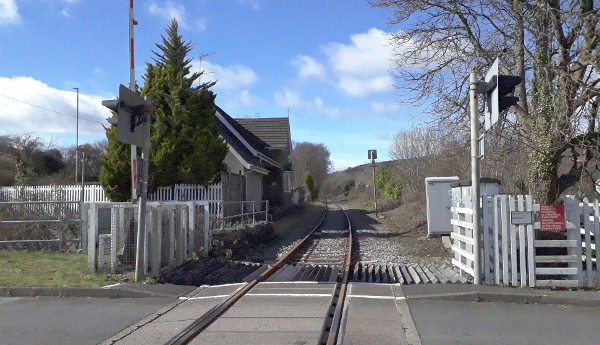The railways of your dreams
Or possibly those of my subconscious
A few months ago now, I wrote something about the sheer number of different railways that interest me enough to want to build models of them. It’s a fairly long list, to be frank, of ideas and concepts that I’ve considered over and over to, for one reason and another, very little concrete result.
My subconscious evidently thinks that that long list isn’t enough, because last night I awoke from a dream that a magazine article had inspired me to build an American-set model railway (or model railroad, I suppose). It was based on the concept of a “double terminus”: two lines meeting from opposite directions, built by different companies, without through trains per se but with traffic interchanged.
To be honest, it’s quite an interesting concept. There are a few examples in Britain I can think of. Halesowen, in the West Midlands, was a rather strange station where the GWR and LMS met from opposite directions. Brecon was a slightly more complex example: the Neath and Brecon Railway met the Brecon and Merthyr Railway end-on, with through trains from the Cambrian Railways, and with the Midland Railway using the whole thing as a route to reach Swansea. After 1922 this all became a lot quieter. The ultimate example is probably Wells, which once was served by three separate railways approaching from three different directions, all of them rather meandering and quiet branchlines.
In a way my subconscious was right: America is somewhat more fertile ground for this sort of concept. Britain suffers from its relative lack of railway companies, particularly from 1923 onwards; there would be many more cases of this sort of thing if it weren’t for earlier amalgamations. I said Brecon became a lot quieter: the companies sharing the station both became part of the Great Western Railway, and the Midland’s successor, the LMS, had its own route into Swansea and didn’t need to pay tolls to its competitor to get there. Brecon’s station became a dozy, sleepy place as a result, losing its railways completely in 1962.* Similar things happened elsewhere, or had happened already. Nevertheless, there were always going to be places where different railways or just different ways of working met. Another Welsh example is Nine Mile Point, an entirely arbitrary place whose existence I’ve briefly touched upon before. In 1805 the Tredegar ironworks wanted to build a railway to Newport, but the Monmouthshire Canal didn’t want to lose their income; they agreed to compromise by building half of the railway each, with the dividing line being at the ninth milepost from Newport. For one reason and another the canal company ended up asking the Great Western Railway to buy it out (and the results can still be seen); and the ironworks-founded Sirhowy Railway ended up owned by the London and North Western Railway. Nine Mile Point became a “frontier”, and lasted as such into the 1960s. It’s interesting to speculate how much the Sirhowy Valley suffered by comparison with the valleys either side, through having its railway divided in that way, but of course it can only ever be speculation.
I’m not going to add “random dream-inspired American railroad” to my list of models I might one day build, but it has at least sparked off a bit of thought and imagination in my mind, and led to this blog post at the very least. I’m going to finish it off with a photo of somewhere I might more plausibly build a model of one day.

This is the former Rhiwderin station, at the far end of the Brecon & Merthyr Railway from Brecon. It has a properly-scenic model railway feel to it, with the station building, the level crossing (replacing an earlier bridge), a Victorian village school next to the station, and a row of worker’s cottages behind the school. The terraces and the school were built for the workers at a tinplate factory which was built alongside the railway here but had already gone bankrupt by the 1870s. As a model it looks very attractive, with all of the parts in place just so; but it would also be fairly boring to operate as a railway, with trains heading back and forth but not much else going on. That’s the problem with real places for model railways: they rarely combine both an attractive appearence with interesting things going on. Maybe the railways of your dreams have their advantages after all.
* Nothing to do with the infamous Richard Beeching, before you ask; he didn’t publish his report until the following year.

 Home
Home